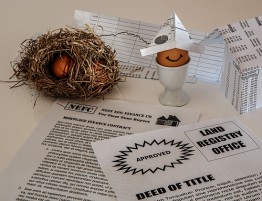
The Joneses have a very friendly golden retriever named Sparky. But they let him off leash in the common areas of your homeowner association and the mutt bounds up to neighbors and jumps on them to say hello. The neighbors like the Joneses and Sparky, but they’ve asked you to remind them that they must follow the HOA’s rules and leash their dog.
Or maybe you’re in a condo association that allows cats, but residents have complained that Mike in unit 249 has 13 of the feline creatures, and the smell is getting to be noticeable.
If your community association allows pets–but with restrictions–you need a plan for dealing with scofflaws. Here are five rules for addressing negligent owners in your homeowner association.
1) Enforce the rules. Though you may love pets yourself, people have bought into your HOA in part because they liked the rules that governed owners’ behavior. It’s your job–and fiduciary duty–as a board member of your homeowners association to enforce those rules. It doesn’t matter that Sparky is friendly. If the Joneses are violating the rules–and their neighbors’ ability to live in peace has been diminished–put on your enforcement hat and do your job as an HOA board member.
2) Document the problem. If the Wilson family lets its dogs out at 6 a.m. each day and allows them to bark until they go to work at 7:30 a.m., start taking notes. Create a log of the incidents and document them in as many ways as possible. Take pictures, record the barking, and ask disgruntled neighbors in your HOA to write a complaint. Only when you have solid evidence that there’s a problem should you approach owners about resolving it.
3) Ask for compliance. Before you come down like an anvil on owners in your HOA who are oblivious to the tension their pets are causing, try honey first. Either in person or through a letter, explain the problem and ask that it be corrected. It’s hard for owners to be angry or dismissive if you’re standing in front of them, so a personal discussion may resolve the issue more quickly. If you take that route, however, document the discussion immediately afterward. Be specific in explaining the problem and the actions you need the owners to take, and don’t threaten them with fines or other punitive action. The time for threats may come, but at this stage, they could be counterproductive.
4) Follow up. After you’ve let the owner know there have been complaints and asked for resolution, check in again to evaluate whether the problem has been corrected. If not, get tough. Now’s the time to remind owners of the rules and the penalties for breaking them. Review your governing documents to be sure you know your options. Then write a letter explaining the problem, your efforts to resolve it, and the fact that it hasn’t been fixed. Explain that if the problem isn’t corrected within a certain time, you’ll begin the HOA’s process for dealing with noncompliant homeowners. Keep that promise, and take all the actions necessary to bring the owners into compliance.
5) Be compassionate. If the homeowners are in a tough position–perhaps they have too many cats or dogs but don’t want to give them up because they fear they’ll be euthanized–volunteer to help. You might be thinking that’s above and beyond the call of duty, and you’re probably right. But if you don’t have the time or temperament to help the owners, ask an animal-lover in your homeowner association to take the point. The job may require phone calls to local shelters or posting information about the pets on adoption Web sites, but chances are the outcome will be positive. If you take that route, everybody wins.
Matt Humphrey is the president of Plain-English Media, LLC, publishers of HOAleader.com the Practical Guide to Homeowner Association Management.
HOAleader.com’s attorney editors and experienced journalists constantly research the latest developments in HOA law affecting homeowner and condominium associations across the U.S. Then we publish plain-English analyses of what those developments mean to you as an HOA leader, and what you need to do now to comply with HOA laws, steer clear of legal trouble, avoid or resolve conflicts within your homeowners association, make HOA management easier, and safeguard your community association’s property values and quality of life.
Article Source: http://EzineArticles.com/?expert=Matt_Humphrey
http://EzineArticles.com/?5-Rules-For-Solving-Pet-Problems-in-Your-Homeowners-Association—A-Guide-For-HOA-Board-Members&id=1395540



